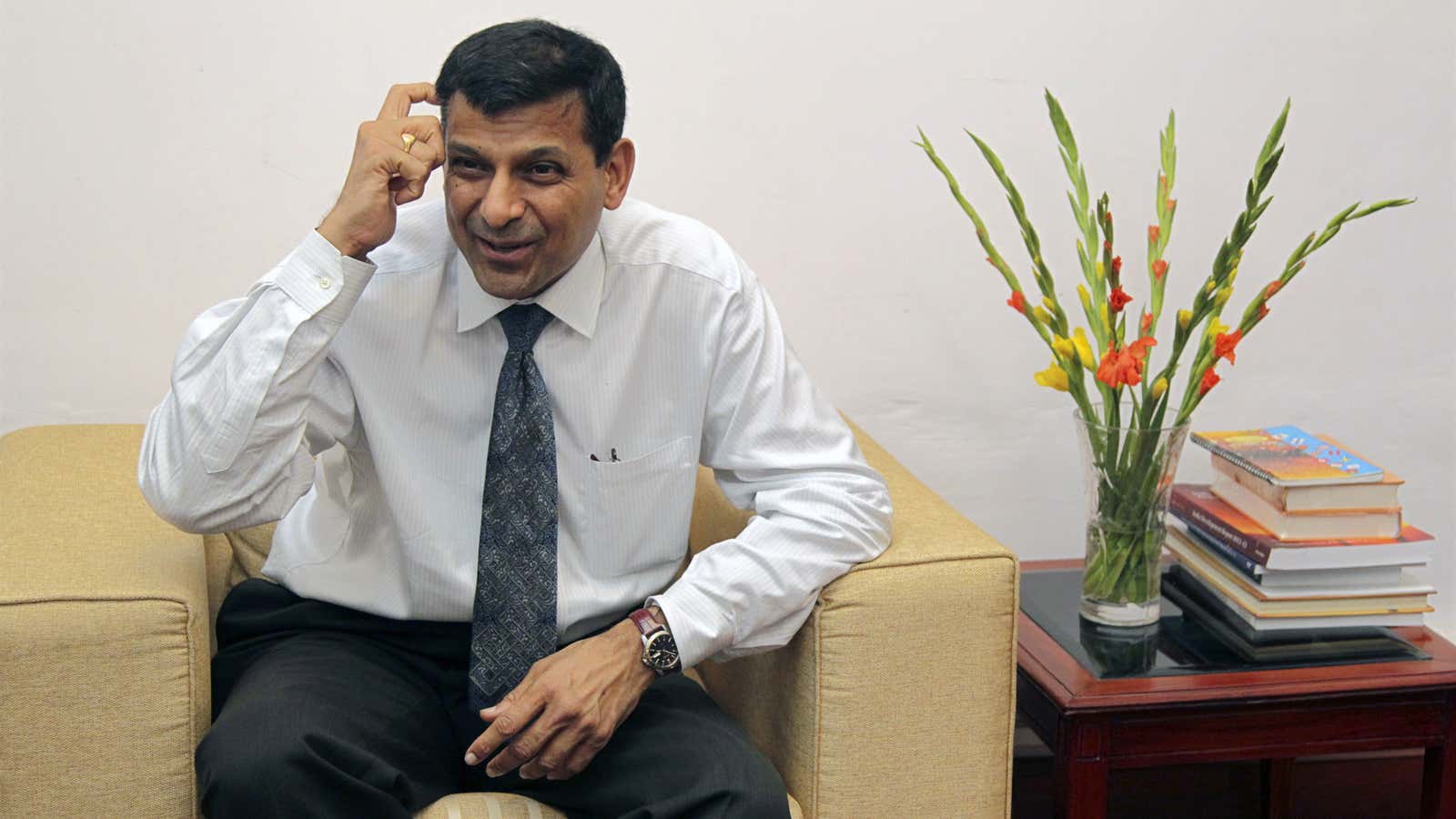The most pressing question for Raghuram Rajan, who takes the helm of the Reserve Bank of India (RBI) in September, is what will he do to save the rupee?
The currency is down 18% against the US dollar since April. Today it tumbled to a fresh record low of more than 64 rupees per US dollar. Prices for government bonds have dropped, pushing borrowing costs sharply higher. The stock market, as measured by the Bombay Stock Exchange’s Sensex, is down 11% in the last month alone. Ratings agencies may cut India’s sovereign debt rating to junk.
It all adds up to a remarkable reversal for India, which has benefitted from years of bubbly investor optimism about emerging markets. Now, India is confronted with an age-old problem for emerging markets: the violent withdrawal of foreign capital.
Foreign cash outflows have been at the heart of many emerging market crises. Countries have responded by building levee systems—known as capital controls—to mitigate destructive tidal flows of investor cash that lead to booms and busts.
But in recent years, economists—including, at times, Rajan—have criticized the concept of capital controls, saying they constrain investment, impede economic growth and enable cozy, inefficient and quasi-corrupt capitalism. ”Free financial markets are the elixir that fuels the process of creative destruction, continuously rejuvenating the capitalist system,” Rajan wrote, with fellow University of Chicago professor Luigi Zingales, in Saving Capitalism from the Capitalists. Published in 2003, the book argued that emerging markets could channel the power of free-flowing international capital to reinvigorate growth.
More recently, the economic literature—and work by Rajan himself—has taken a more nuanced approach. Several studies have found that opening the flood gates to foreign capital doesn’t necessarily spur growth. “Do countries that rely more on foreign capital grow faster in the long run? It turns out, that this is not so,” Rajan wrote in 2006. More recently Rajan has argued for an incremental, “pragmatic” approach to opening up countries up to foreign financial flows.
That sounds sensible in theory. But continuing down the path of incremental openness—for instance, boosting trade’s share of the economy, increasing the share of debt denominated in the national currency, or moving from a fixed to a flexible exchange-rate system—is much harder in practice, outside the leafy confines of academia. Rajan is well aware: While advocating for developing nations to gradually open themselves up to foreign investment in a paper he co-authored in 2008, he acknowledged his position “assumes that policymakers have the luxury of being able to decide when to increase or decrease their economy’s openness to capital flows.”
Thankfully, Rajan has practical experience to complement his academic accolades—both as chief economic adviser to India’s finance ministry and as a former top economist at the International Monetary Fund.
What he doesn’t have is a favorable economic climate, especially after all the recent flip flops by India’s central bank. Starting in July, the RBI tried to stop its currency’s slide with a range of measures. Among them was a decision to raise short-term interest rates sharply. Unfortunately, that prompted a selloff in the bond markets. As the prices of bonds fell—bond yields and prices move in opposite directions—investors began worrying about the health of India’s banks, which are large owners of Indian government bonds and were thought to be piling up large paper losses.
As a result, share prices of banks plummeted, as did the stock market in general. The RBI then moved to shore up confidence in the banks, announcing a plan today to buy long-term government bonds and effectively cap rates. Long story short, that pushed rupees back into the financial markets, boosting the supply of the currency—the exact opposite of the RBI’s original intent. Investors are now confused about whether the bank means to defend the currency or not.
If nothing else, Rajan’s arrival atop the Reserve Bank may give investors hope that clearer, more coherent policies are on the way. But he won’t have time to waste; the markets are sure to keep the pressure on.
